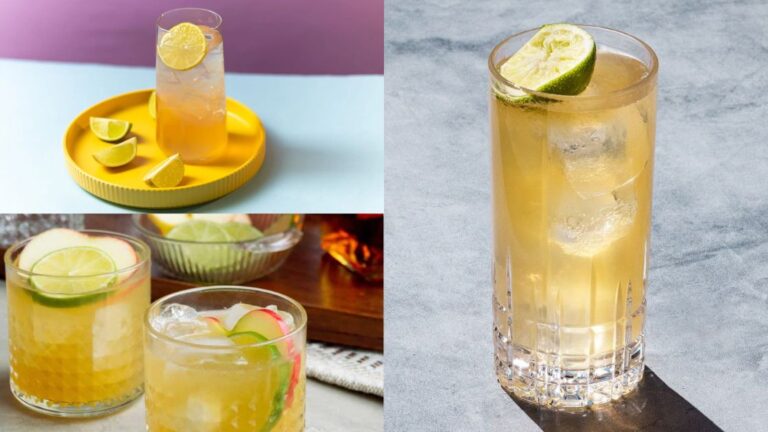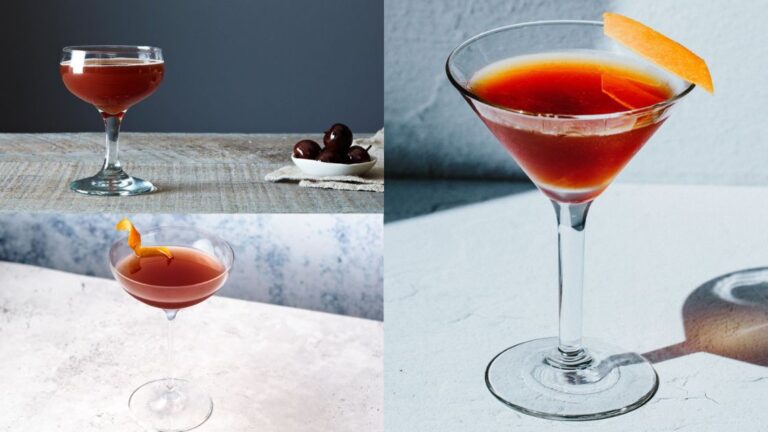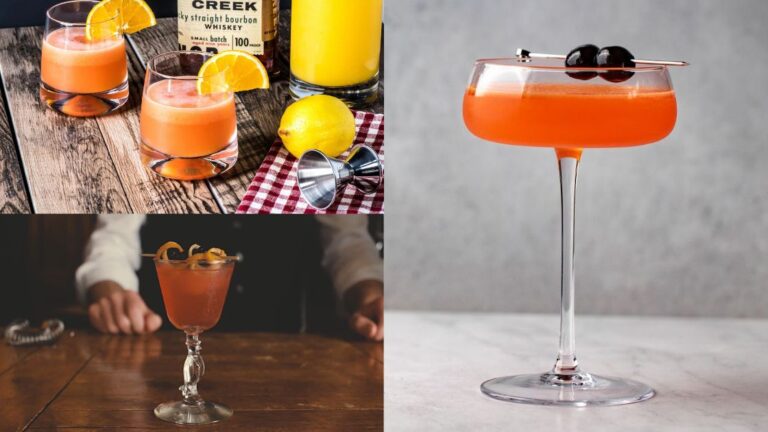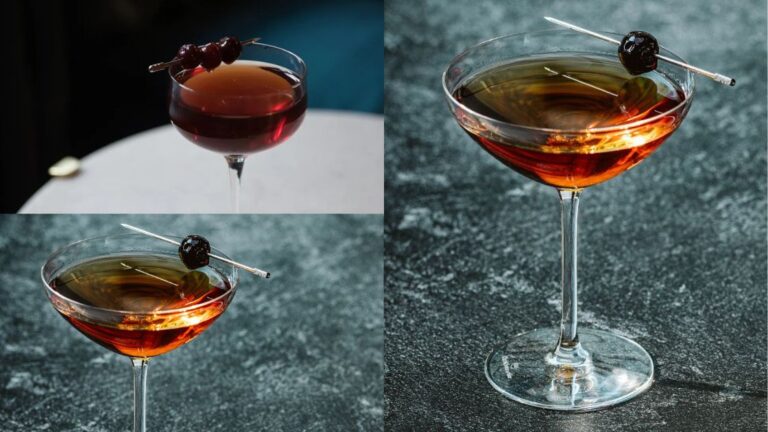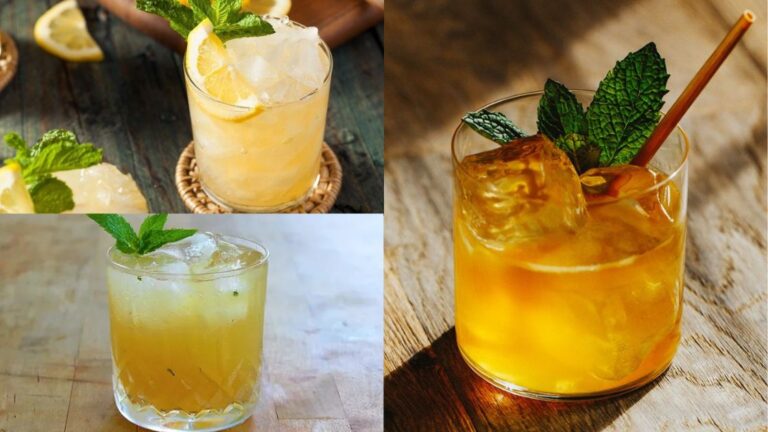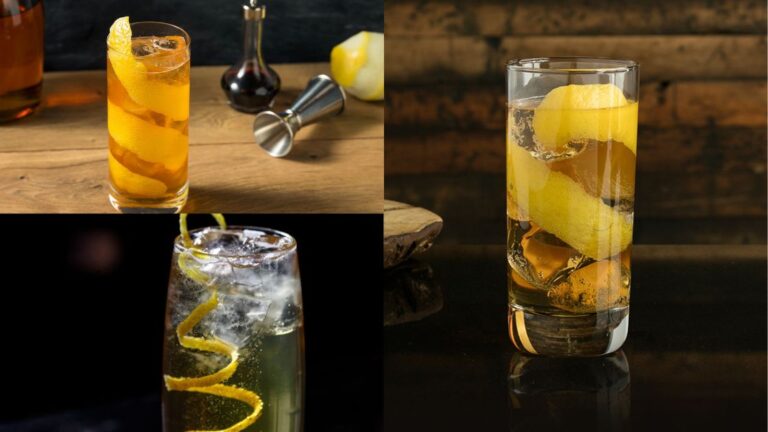In the realm of distilled spirits, bourbon and rye whiskey hold prominent places, beloved by connoisseurs and casual drinkers alike. Originating in the United States, both bourbons and rye whiskeys are grain-based spirits known for their distinct flavors and rich histories. Bourbon, named after Bourbon County in Kentucky, is a whiskey primarily made from corn, while rye whiskey, as the name suggests, is mainly produced using rye grain. While both share some fundamental traits, being classified as whiskeys, they each offer a unique flavor profile and character.
Understanding the differences between bourbon and rye whiskey is more than an exercise in beverage trivia. It is a key to unlocking a more enriching and fulfilling tasting experience. Distinguishing between these two types of whiskey can also aid in making more informed choices when purchasing, pairing them with food, or using them in cocktails. Furthermore, the nuances between bourbons and rye whiskeys tell a story about regional influences, historical contexts, and the craft of distillation, adding an extra dimension to the appreciation of these fine spirits. As we explore the main contrasts between bourbon and rye whiskey, we invite readers to delve into a world of intricate flavors, fascinating processes, and time-honored traditions.
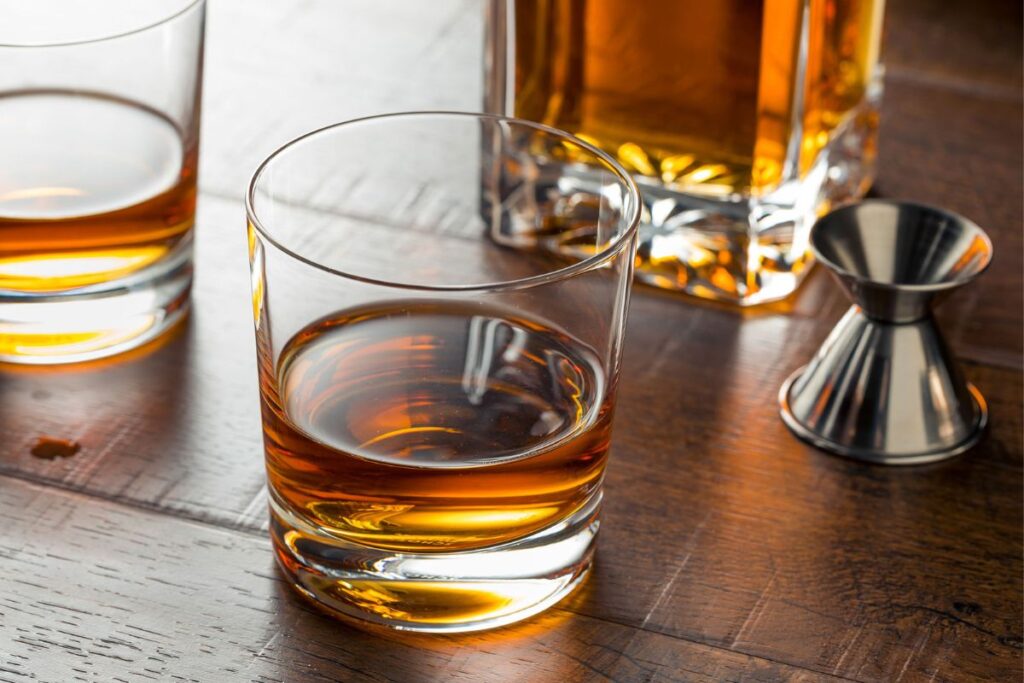
History and Origins
Background and History of Bourbon Whiskey
The saga of bourbon whiskey traces its roots back to the fertile soil of 18th-century America, particularly the corn-laden states of Kentucky and Virginia. The moniker “bourbon” hails from Bourbon County in Kentucky, a region that once stood at the forefront of the whiskey commerce.
The birth of bourbon has been a matter of dispute over time, but one fact remains clear: European settlers brought the craft of distilling with them to the New World, sparking a legacy of corn whiskey production. By the twilight of the 18th century, Kentucky distilleries had already begun the production of corn-based whiskeys, laying the foundation for modern bourbon.
The label “Bourbon” started gaining momentum in the early 19th century and, by the close of the 1800s, bourbon had carved out a solid presence in the industry. Fast forward to 1964, when the U.S. Congress proclaimed bourbon a “distinctive product of the United States,” cementing its status and setting up the standards for a whiskey to wear the title of bourbon.
Background and History of Rye Whiskey
Rye whiskey, on the other hand, boasts a history as vibrant and varied as its bourbon cousin. Its ancestry spreads across both the United States and Canada, harboring unique traditions in each land.
In the United States, the inception of rye whiskey precedes even bourbon, reaching back to the latter part of the 1700s. Early immigrants, primarily of Scottish and Irish heritage, in Pennsylvania and Maryland tapped into the abundant rye grain and became pioneers in American rye whiskey production.
The whiskey these settlers crafted offered a contrast to the corn-based whiskeys from the south, with a zestier, bolder flavor profile. Despite Prohibition’s harsh impact on rye whiskey production in the 1920s, this distinctive spirit has enjoyed a powerful comeback in recent years.
Meanwhile, in Canada, rye whiskey also holds a storied past, although Canadian rye tends to contain less rye grain compared to its American counterpart. Interestingly, the term “rye” has been used interchangeably in Canada to denote any whiskey, mirroring the early Scottish and Irish immigrants’ use of the term to distinguish their grain spirits from rum and brandy. Today, Canadian rye whiskeys are celebrated for their smooth, light, and inviting flavor profile.
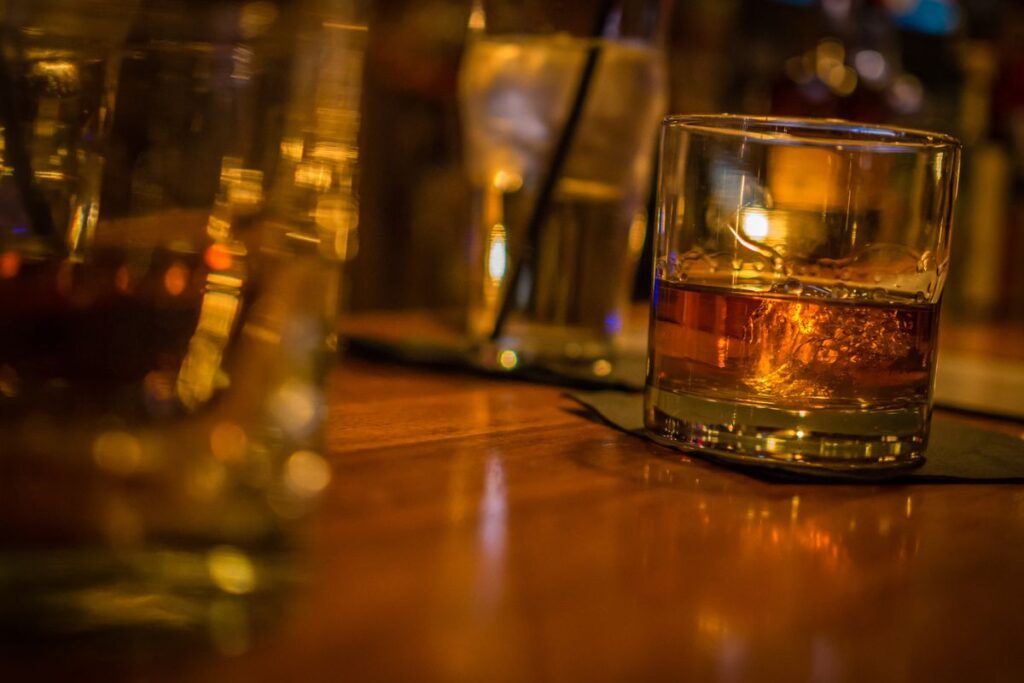
Production Process
Bourbon Production Process
Bourbon production begins with the selection and milling of grains, primarily corn but also a smaller percentage of barley and either rye or wheat. The chosen grains are mixed with water and then cooked to break down the starches and convert them into fermentable sugars.
Next, this mixture, called a mash, is cooled and yeast is added to begin the fermentation process, during which the yeast consumes the sugars and produces alcohol. The result, known as the “distiller’s beer,” typically contains about 6-10% alcohol.
The distiller’s beer then goes through distillation, usually in a column still, where it is heated until it becomes a vapor. This vapor is then condensed into a high-proof alcohol called “white dog,” or raw whiskey.
The white dog is aged in new, charred oak barrels, which is where bourbon gets its color and a significant amount of its flavor. The spirit must be aged for a minimum of two years to be legally defined as straight bourbon, but many bourbons are aged for four years or more.
Rye Whiskey Production Process
The process for producing rye whiskey is similar to bourbon, with a key difference being the grain composition of the mash. For rye whiskey, at least 51% of the mash must be rye grain. The remaining percentage typically includes a mix of corn and malted barley.
After the grains are selected and milled, they are mixed with water and heated to convert the grain starches into fermentable sugars. Yeast is added to ferment the mash, creating alcohol. This fermented mash is distilled, typically in a column still, resulting in a high-proof spirit.
This spirit is then aged in charred, new oak barrels. The aging process, which is where rye whiskey acquires much of its flavor and its caramel color, must last for at least two years for the whiskey to be designated as straight rye whiskey.
Legal Requirements and Standards for Production
The production of bourbon and rye whiskey is regulated by specific legal standards. In the United States, for a whiskey to be labeled as bourbon, it must be made from a grain mixture that’s at least 51% corn, distilled to no more than 160 proof, entered into the barrel for aging at no more than 125 proof, and be aged in new, charred oak containers. If the spirit is aged for a minimum of two years, contains no added coloring, flavoring, or other spirits, it can be termed as ‘straight’ bourbon.
Rye whiskey in the U.S. also follows stringent legal requirements. It must be made from a grain mixture that’s at least 51% rye, distilled to no more than 160 proof, entered into the barrel at no more than 125 proof, and aged in new, charred oak barrels. If the whiskey is aged for at least two years and has not been blended with other spirits, it may be referred to as ‘straight’ rye whiskey.
In contrast, Canadian rye whisky regulations are more lenient. The spirit may be called rye whisky even if it contains a small percentage of rye grain, provided it possesses the aroma, taste, and character generally attributed to Canadian whisky. It must also be aged in wood barrels, not exceeding 700 liters capacity, for at least three years.
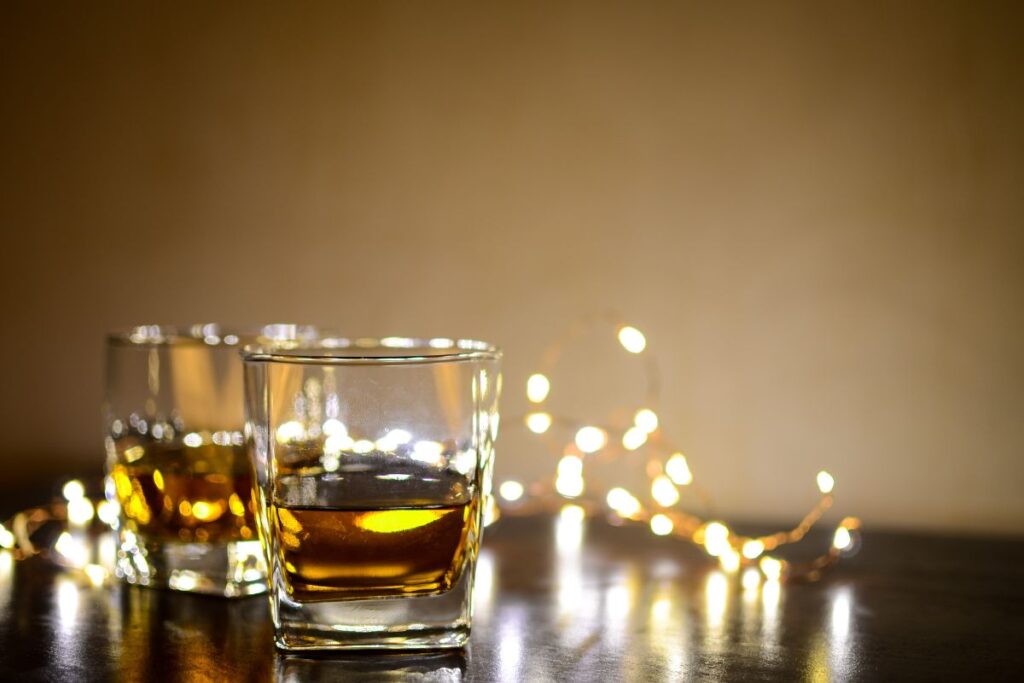
Main Ingredients
Primary Ingredients in Bourbon
The primary ingredient in bourbon is corn, which must comprise at least 51% of the grain mixture, according to U.S. law. The high corn content contributes to bourbon’s generally sweet and full-bodied flavor profile.
The remainder of the grain mixture typically includes rye and malted barley. Some bourbons, known as “wheated bourbons,” replace the rye with wheat, which gives the bourbon a softer, smoother flavor. An example of this is Maker’s Mark, a well-known wheated bourbon.
Other critical ingredients in bourbon production include yeast, which is necessary for fermentation, and water. Some distilleries use specially sourced water, like limestone-filtered water in Kentucky, which can influence the flavor of the bourbon.
Lastly, new charred oak barrels, which are used for aging, are essential in bourbon production. They give bourbon its amber color and contribute significantly to its flavor, adding notes of caramel, vanilla, and oak.
Primary Ingredients in Rye Whiskey
For rye whiskey, the main ingredient, as per U.S. regulations, is rye grain. This grain must constitute at least 51% of the mash bill. Rye grain gives rye whiskey its characteristic spicy or fruity flavor.
The rest of the grain mix typically includes corn and malted barley. The percentages of these grains can vary greatly from one rye whiskey to another, leading to a broad range of flavor profiles within the category.
Like bourbon, rye whiskey also requires yeast for the fermentation process and water. And, similar to bourbon, the aging process in new charred oak barrels is crucial for the development of rye whiskey’s color and flavor. These barrels imbue the rye whiskey with a warm, amber color and complex flavors, including notes of caramel, vanilla, and, of course, spicy rye.
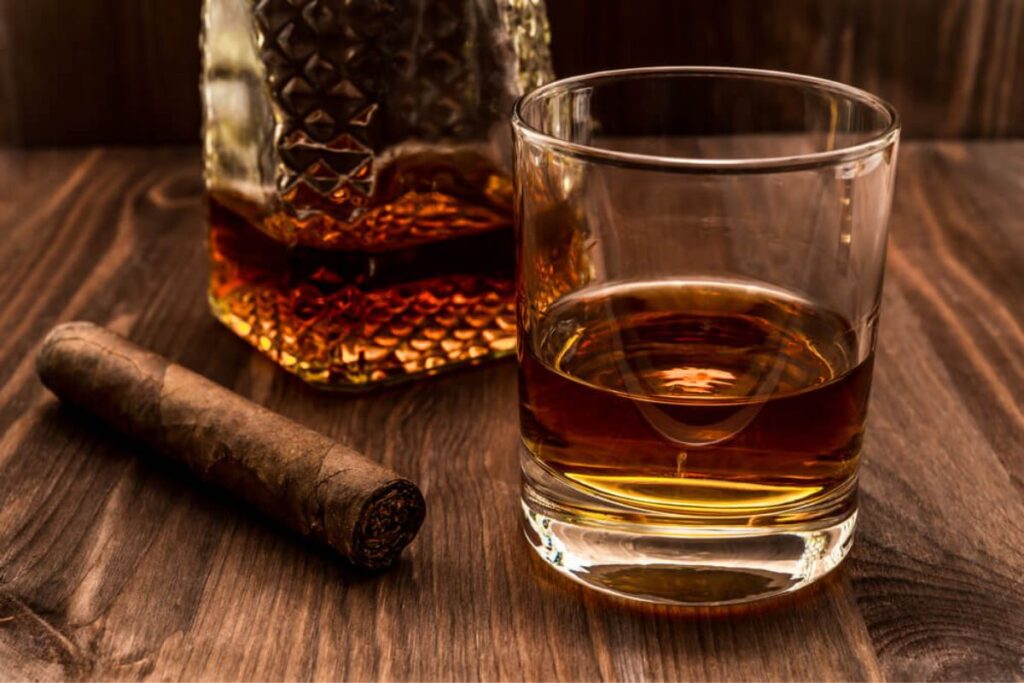
Taste Profiles
Typical Taste Profile of Bourbon
Bourbon is often characterized by a full-bodied and rich flavor profile. Given its primary ingredient, corn, bourbon tends to have a sweetness that can range from subtle to pronounced. This sweetness is often complemented by notes of vanilla and caramel, a result of aging in charred oak barrels.
Bourbon can also carry flavors of dark fruit like cherry or plum, as well as a warm, toasted oak flavor. Depending on the grain mixture used, you may also notice hints of grain or a slightly spicy note from rye, or a softer, bread-like flavor in wheated bourbons.
The flavor of bourbon can be influenced by several factors, including the specific blend of grains used, the duration and conditions of aging, and the source and mineral content of the water used in production. Despite this variety, bourbons generally share a certain richness and sweetness, along with the complexity added by the oak aging process.
Typical Taste Profile of Rye Whiskey
Rye whiskey, in contrast, is typically known for a spicier and fruitier profile, a characteristic of the rye grain. This spiciness is often described as a peppery flavor on the palate. Rye whiskeys also tend to exhibit flavors of citrus and stone fruits, such as apples, pears, or apricots.
Alongside these flavors, you’ll often find notes of grain or cereal, a reflection of the high grain content. Aging in charred oak barrels lends rye whiskey flavors of caramel and vanilla, similar to bourbon, although these flavors are usually less pronounced than the spice and fruit characteristics.
Rye whiskey tends to be drier and less sweet than bourbon, and the overall flavor can be quite bold. As with bourbon, the exact taste of rye whiskey can vary depending on factors such as the grain mixture, aging process, and water source. However, the spicy, fruity, and grain-forward character of rye whiskey is generally consistent across different brands and styles.
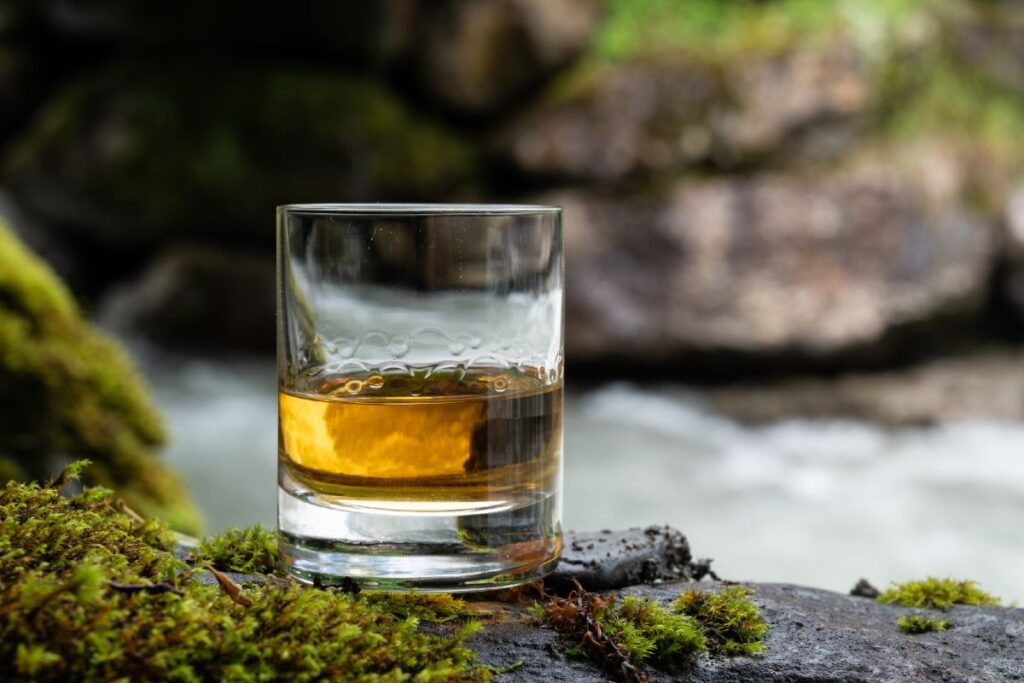
Aging Process
Aging Process for Bourbon
The aging process is a vital component of bourbon production. After distillation, the clear spirit, often referred to as “white dog,” is transferred to charred new oak barrels for aging. The charring of the barrels is a crucial step as it allows the spirit to interact with the wood more effectively.
Over time, as the barrels expand and contract with the changing seasons, the bourbon seeps into the charred wood, drawing out flavors such as vanilla, caramel, and oak, and gaining its distinctive amber color. Aging also helps to mellow the harshness of the raw spirit, leading to a smoother final product.
Legally, to be defined as bourbon, the spirit must be aged for a minimum of two years. However, many bourbons are aged for much longer, often between four to twelve years, or even more. The length of aging can significantly affect the flavor, with longer-aged bourbons typically having deeper, more complex flavors.
Aging Process for Rye Whiskey
The aging process for rye whiskey is similar to that of bourbon. After distillation, the rye spirit is aged in new, charred oak barrels. The charring of the barrels helps to develop the whiskey’s flavor and color.
Like bourbon, rye whiskey draws flavors from the wood during aging, gaining notes of caramel, vanilla, and oak. The aging process also mellows the spiciness of the rye, leading to a more balanced and complex flavor profile.
In the U.S., for a rye whiskey to be designated as a ‘straight’ rye whiskey, it must be aged for at least two years. However, many rye whiskeys are aged for longer periods, with the additional aging time contributing to a richer, more nuanced flavor.
It’s worth noting that aging rye whiskey for an extended period can sometimes soften its characteristic spiciness. As such, the optimal aging time for rye whiskey can vary based on the desired balance of flavors.
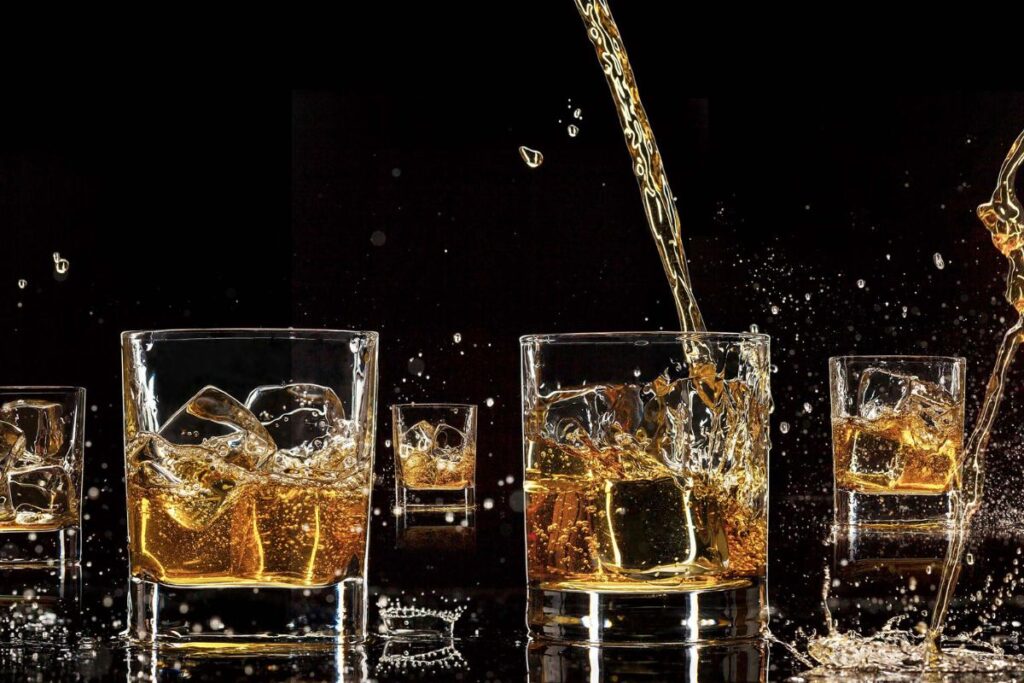
Pairings and Cocktails
Suitable Food Pairings and Cocktails for Bourbon
Bourbon’s rich and sweet flavor profile makes it a versatile spirit for food pairings. It can be paired beautifully with a variety of foods, including smoked meats, strong cheeses, and rich desserts. The sweetness of bourbon can balance the smokiness of barbecue or the saltiness of aged cheese, while it can enhance the flavors in desserts like pecan pie or chocolate brownies.
When it comes to cocktails, bourbon is a classic choice. Its robust flavor stands up well to mixing. It’s the star ingredient in iconic cocktails like the Old Fashioned, a simple mix of bourbon, sugar, water, and bitters, and the Mint Julep, a refreshing combination of bourbon, mint, and sugar traditionally associated with the Kentucky Derby. The Whiskey Sour, which combines bourbon with lemon juice and sugar, is another classic choice.
Suitable Food Pairings and Cocktails for Rye Whiskey
Rye whiskey, with its spicy and robust character, pairs well with a range of foods. Its bold flavor can stand up to strong, rich foods like venison, roast beef, or spicy sausage. Rye whiskey also complements sharp cheeses and dark chocolate, where the spiciness of the rye can offset the richness of the food.
As for cocktails, rye whiskey’s assertive flavor makes it ideal for drinks that require a robust whiskey profile. Classic cocktails like the Manhattan, made with rye whiskey, sweet vermouth, and bitters, showcase the spirit’s complex flavor. The Sazerac, a New Orleans classic, pairs rye whiskey with absinthe and bitters, resulting in a cocktail with depth and spice. Rye is also an excellent choice for a Whiskey Sour, adding a spicier twist to the classic.
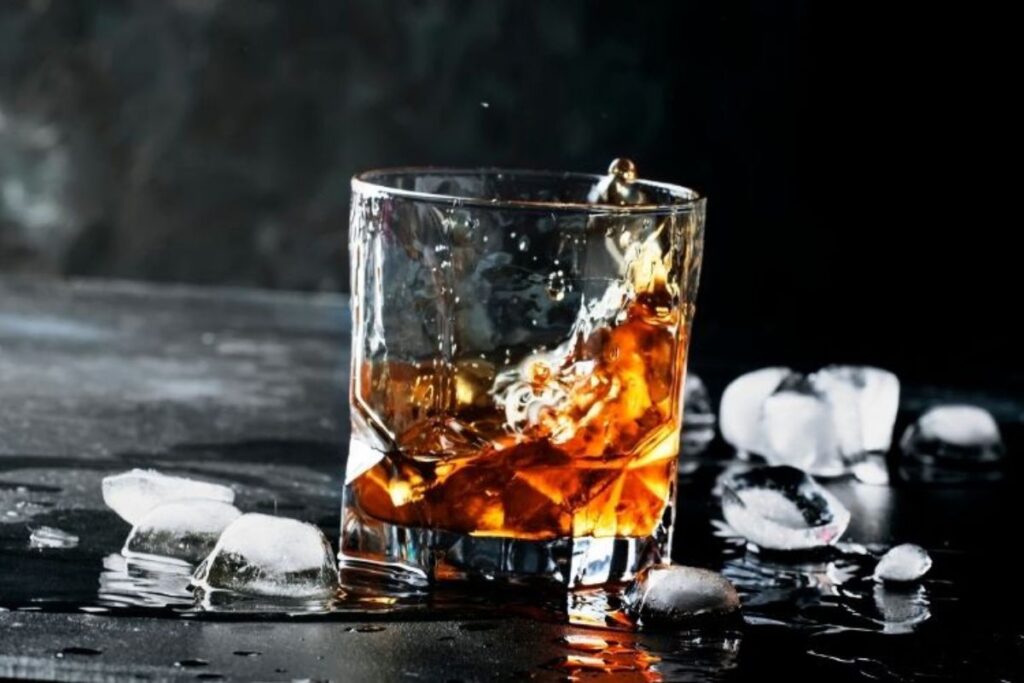
The Effect of the Region on the Flavor
Influence of the Region on the Flavor of Bourbon
Bourbon production is most closely associated with the state of Kentucky, and the region’s climate and natural resources play a significant role in shaping the flavor of the whiskey.
One of the main factors is the state’s climate, which has hot, humid summers and cold winters. These weather conditions cause the oak barrels in which bourbon is aged to expand and contract, allowing the whiskey to penetrate the wood more deeply and draw out more flavors.
The water in Kentucky also plays a crucial role. It’s naturally filtered through limestone, which removes iron, a mineral that can negatively affect the taste of whiskey. This limestone-filtered water, which is rich in beneficial minerals like calcium, contributes to the distinctive taste of Kentucky bourbon.
While bourbon can legally be made anywhere in the U.S., Kentucky bourbon is widely regarded as possessing a unique flavor profile due to these regional characteristics.
Influence of the Region on the Flavor of Rye Whiskey
American rye whiskey has its roots in the northeastern states, particularly Pennsylvania and Maryland. The colder climate in these areas historically influenced the aging process, potentially leading to a slower maturation and the development of complex flavors in the whiskey.
Pennsylvania, or “Monongahela,” rye was traditionally known for its robust, spicy character, made from a mash bill containing a high percentage of rye grain. Maryland rye, on the other hand, was typically softer and fruitier, reflecting differences in production methods and grain composition.
Today, rye whiskey is produced in many parts of North America, and regional differences can be seen. For instance, Canadian rye whisky, despite its name, doesn’t have a legally defined rye grain requirement, and its flavor profile can differ significantly from American rye whiskey. It can be lighter and smoother, with some examples offering a more bourbon-like sweetness.
Therefore, the region can greatly influence the flavor of rye whiskey, through factors like climate, local production methods, and regulations.
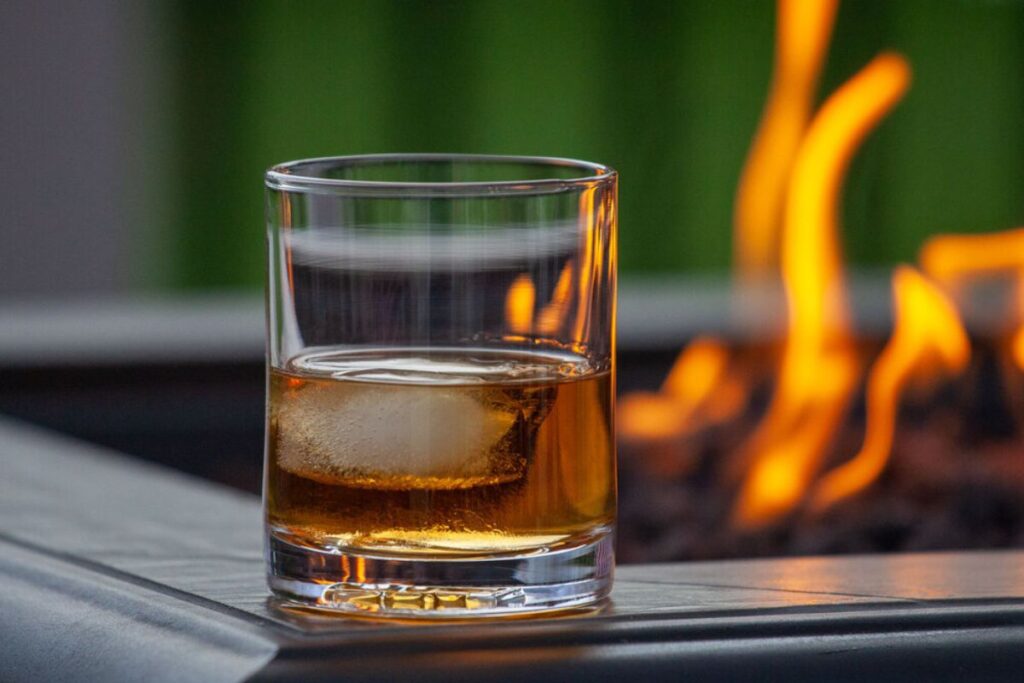
Conclusion
Bourbon and rye whiskey, while sharing several similarities, have distinctive differences that set them apart. These differences begin with the main ingredients, with bourbon requiring at least 51% corn in its mash bill, while rye whiskey requires at least 51% rye. This distinction results in significant flavor differences, with bourbon tending towards a sweeter, richer profile, and rye offering a spicier, fruitier taste.
The aging process for both bourbon and rye whiskey is similar, requiring new, charred oak barrels. However, the optimal aging times may differ based on the desired balance of flavors, and the length of aging can significantly influence the final product.
Lastly, the region of production, from the local climate to the production methods and regulations, can impact the whiskey’s flavor profile. While bourbon is most closely associated with Kentucky, rye whiskey has roots in various regions across North America, each with its unique character.
Choosing between bourbon and rye whiskey ultimately depends on your personal taste preferences. If you enjoy a full-bodied, sweet, and rich flavor profile, you might lean towards bourbon. Its sweet notes of vanilla, caramel, and oak can be a perfect introduction to the world of whiskey.
On the other hand, if you’re drawn to bold, spicy, and fruitier flavors, rye whiskey could be a great choice. The characteristic spiciness of rye whiskey, combined with its complex flavor profile, can offer a more robust tasting experience.
Consider also the cocktails you enjoy. Bourbon is a classic choice for cocktails like the Old Fashioned and the Mint Julep, while rye whiskey shines in drinks like the Manhattan and the Sazerac.
Experimenting with whiskeys from different regions can also help you discover which styles and characteristics you prefer. Whether you’re new to whiskey or an experienced connoisseur, the exploration of bourbon and rye whiskey offers an enriching journey full of diverse flavors and experiences.
